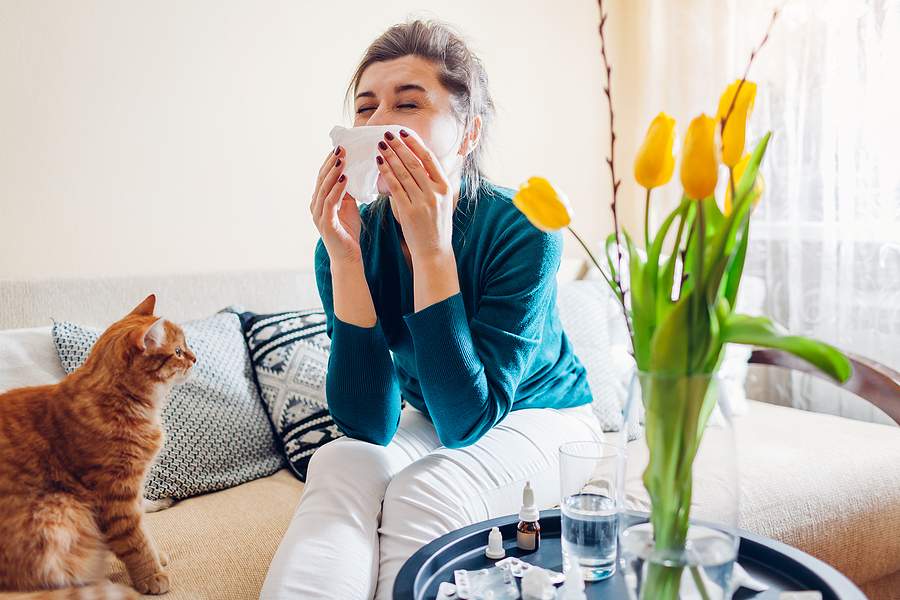Allergies to furry pets are common, especially among people who suffer from asthma or have other allergies. In fact, in the US, approximately thirty percent of individuals with allergies are allergic to dogs or cats. Interestingly, cat allergies are twice as prevalent as dog allergies. However, pet allergies are not confined to just dogs or cats – our feathered friends can also be culprits.
What Causes Pet Allergies?
If you have a pet allergy, your body’s immune system is reacting to proteins in the animal’s dander (dead skin cells), saliva, or urine. The substances that trigger allergic reactions are called allergens. Pet hair is a problem because it can collect dander, saliva, and urine and also play host to other allergens such as dust and pollen.
Pet Allergens Are All Around You
Pet allergens collect on furniture, clothing, walls, and other surfaces and can remain at high levels for several months. They are also stirred into the air during dusting, vacuuming, and other household activities, and, once airborne, they can remain suspended in the air for long periods.
Can Pet Allergies Be Treated?
Prevention is the best treatment. This means avoiding contact with problem animals and where they live. However, pet allergies make it hard to visit relatives and friends who have pets you or a family member are allergic to. Consult your doctor about the possible use of medication before social exposures and what measures to take afterward.
What If I Want to Keep My Pet?
If you are determined to keep your pet, here are five tips to help reduce allergen exposure:
- No pet in the bedroom. However much you might want to snuggle with your dog or cat, make your bedroom inaccessible to your pet. Keep the door closed and clean the room aggressively. Cover vents with cheesecloth or some other dense filtering material and consider installing a HEPA air cleaner.
- Pay attention to carpets. Remove your pet’s favorite furniture and any wall-to-wall carpeting because allergens will stick to them. If you simply can’t live without carpets, choose ones with a low pile and steam clean them regularly. A better way to go is to use washable throw rugs and launder them often.
- Vacuum the right way. When vacuuming, wear a protective dust mask. Vacuum cleaners are really good at churning up allergens that have settled on carpeting. Invest in a vacuum cleaner with a certified asthma and allergy-friendly filter. Change your clothing after a vacuuming session.
- Bathe your dog. Wash your dog every week to help reduce airborne allergens. Note that If you have a cat allergy, most cats will not take kindly to weekly bathing!
- Avoid the litter box. Enlist someone without a pet allergy to clean the cat’s litter box or the bird’s cage, and also brush your dog or cat outside to remove dander.
Pet Allergies – Final Thoughts
The bad news is that a truly non-allergic cat or dog does not exist (not even the hairless ones!). However, people with dog allergies may be more sensitive to certain breeds than others. The good news is that most people with pet allergies are only allergic to one kind of pet, so choosing the right animal is an obvious solution.
It’s hard not to be able to enjoy a pet that you are allergic to. So, talk to your allergist about options for medication or immunotherapy. At Midlands Pet Care, we want your pet to be with you for a long time, so please choose a pet that you aren’t allergic to or follow the advice in this article to minimize your allergic reaction.

